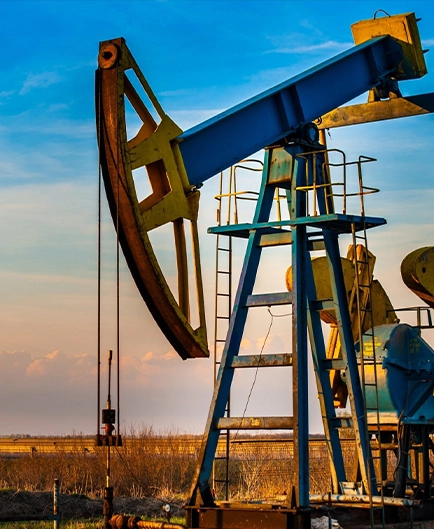- Afrikaans
- Albanian
- Amharic
- Arabic
- Armenian
- Azerbaijani
- Basque
- Belarusian
- Bengali
- Bosnian
- Bulgarian
- Catalan
- Cebuano
- Corsican
- Croatian
- Czech
- Danish
- Dutch
- English
- Esperanto
- Estonian
- Finnish
- French
- Frisian
- Galician
- Georgian
- German
- Greek
- Gujarati
- Haitian Creole
- hausa
- hawaiian
- Hebrew
- Hindi
- Miao
- Hungarian
- Icelandic
- igbo
- Indonesian
- irish
- Italian
- Japanese
- Javanese
- Kannada
- kazakh
- Khmer
- Rwandese
- Korean
- Kurdish
- Kyrgyz
- Lao
- Latin
- Latvian
- Lithuanian
- Luxembourgish
- Macedonian
- Malgashi
- Malay
- Malayalam
- Maltese
- Maori
- Marathi
- Mongolian
- Myanmar
- Nepali
- Norwegian
- Norwegian
- Occitan
- Pashto
- Persian
- Polish
- Portuguese
- Punjabi
- Romanian
- Russian
- Samoan
- Scottish Gaelic
- Serbian
- Sesotho
- Shona
- Sindhi
- Sinhala
- Slovak
- Slovenian
- Somali
- Spanish
- Sundanese
- Swahili
- Swedish
- Tagalog
- Tajik
- Tamil
- Tatar
- Telugu
- Thai
- Turkish
- Turkmen
- Ukrainian
- Urdu
- Uighur
- Uzbek
- Vietnamese
- Welsh
- Bantu
- Yiddish
- Yoruba
- Zulu
casing and tubing connections
Casing and Tubing Connections Understanding Their Importance in Oil and Gas Operations
In the petroleum industry, casing and tubing connections play a vital role in the integrity and safety of drilling operations. These components are essential for forming a robust wellbore structure, ensuring that hydrocarbons can be efficiently extracted from the Earth while safeguarding surrounding environments and resources. This article will explore the significance of casing and tubing connections, as well as the various types and technologies involved in their design and application.
Casing The Backbone of the Well
Casing is a series of steel pipes that are installed in the wellbore to stabilize it and protect it from the surrounding geological formations. The primary function of casing is to prevent the collapse of the well as well as to isolate different pressurized zones within the subsurface. The successful installation of casing is a critical step in well construction, as it provides crucial protection against contamination of freshwater aquifers and helps mitigate well integrity issues.
The casing string is composed of several sections, each designed for specific operations. The surface casing is the first layer added during drilling, providing foundational stability and protecting the uppermost sections of the well. Next comes the intermediate casing, which further supports the well and isolates potentially problematic formations. Finally, production casing is installed just above the hydrocarbon-producing formation, optimizing the pathway for resource extraction.
Tubing The Conduit for Production
Once the casing is in place, tubing is inserted into the well to transport oil and gas to the surface. Tubing is a smaller diameter pipe compared to casing and serves as the conduit for fluids produced from the reservoir. The tubing string is often equipped with special connections that facilitate quick measurements and optimization of production practices.
One of the critical aspects of tubing is its ability to endure harsh conditions, including high pressure and temperatures. Different tubing materials and designs cater to varied operational environments, with corrosion-resistant alloys being a common choice for corrosive fluids. Furthermore, the spacing of tubing connections is designed to allow for easy maintenance and intervention when necessary.
Types of Connections
casing and tubing connections

Both casing and tubing sections use threaded connections, known as couplings or joints, to connect each segment. The integrity of these connections is paramount; any failure could lead to catastrophic incidents. Various connection types have been developed to withstand the stresses encountered in downhole environments.
1. Box and Pin Connections This is the most common design, consisting of a male (pin) and female (box) thread. It provides a strong mechanical connection suitable for most applications.
2. Slip-On Connections These connections are easier to install and disassemble, making them a popular choice for temporary setups or when regular maintenance is anticipated.
3. Welded Connections While less common, welded connections can be used for permanent applications, providing a hermetic seal that eliminates the risk of leaks.
4. Premium Connections Designed for extreme conditions (like high pressure or temperature), premium connections come with additional features such as enhanced sealing capabilities and are subject to rigorous testing.
Industry Innovations and Future Trends
As the oil and gas industry looks to enhance efficiency and safety, advances in technology have significantly improved casing and tubing connections. Developments in materials science have led to stronger, more durable connections, while innovations in manufacturing techniques have enabled closer tolerances and better quality control.
Moreover, the industry is increasingly adopting digital technologies for monitoring the integrity of casing and tubing connections. Real-time data analysis can help identify potential failure points before they become critical issues, thereby preventing costly downtime and enhancing operational efficiency.
In conclusion, casing and tubing connections form the backbone of successful oil and gas extraction operations. Understanding their components, functions, and the latest technological advancements is essential for industry professionals to ensure safe and efficient drilling practices. As the industry evolves, an emphasis on innovative materials and monitoring technologies will further strengthen the integrity of these connections, securing the future of energy production.
-
Tubing Pup Joints: Essential Components for Oil and Gas OperationsNewsJul.10,2025
-
Pup Joints: Essential Components for Reliable Drilling OperationsNewsJul.10,2025
-
Pipe Couplings: Connecting Your World EfficientlyNewsJul.10,2025
-
Mastering Oilfield Operations with Quality Tubing and CasingNewsJul.10,2025
-
High-Quality Casing Couplings for Every NeedNewsJul.10,2025
-
Boost Your Drilling Efficiency with Premium Crossover Tools & Seating NipplesNewsJul.10,2025







